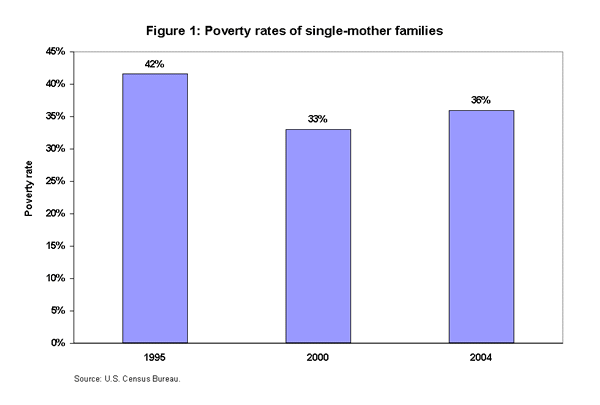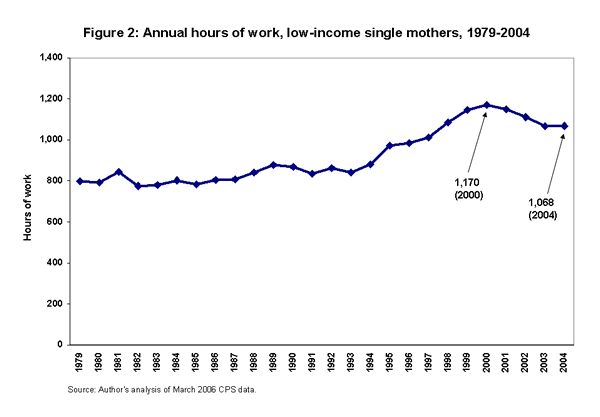See Snapshots Archive.
This week’s Snapshot previews data to be presented as part of the forthcoming The State of Working America 2006/07.
Snapshot for August 9, 2006.
Work, poverty, and single-mother families
This month marks the 10th anniversary of the welfare reform legislation signed in August 1996. Those touting the program’s success often cite the sharp decline in the poverty rates of single-mother families over the course of the latter 1990s (as shown in the figure below).

While research has shown that changes in the rules governing welfare did contribute to an increase in welfare recipients (and potential recipients) in the workforce, other economic factors also played an important and complementary role. In fact, the strong increase in employment opportunities in the latter 1990s meant that the demand for labor expanded more than enough to meet the increase in labor supply precipitated by welfare reform.
This raises the question: under welfare reform, what happens to the living standards of single mothers in a much less hospitable labor market? The answer, as shown in the figure’s third bar, is that their poverty rate rises.
One main reason for this is shown in the second figure, which tracks the average annual hours of work by low-income, single mothers.1 Single mothers clearly responded to both policy and economic changes in the latter 1990s, sharply increasing their annual hours of work in the paid job market. But the recession and jobless recovery meant fewer opportunities for these women. Note, for example, that employment for non-managers in retail grew by 1.9 million jobs from 1994 to 2000, but actually lost 33,000 jobs from 2000 to 2005. Thus, single-mothers’ annual hours fell, and their poverty rates reversed course.
Both figures reveal that the cyclical falloff in job opportunities did not fully reverse the progress made by single mothers during the latter 1990s. But that data also exposes the lack of an effective safety net to catch these economically vulnerable families when fewer jobs are available.

Note
1. The data refer to families with incomes below twice the poverty line.
